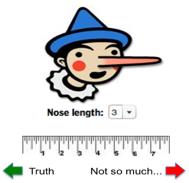 We all know that our frame of mind, or mood if you prefer, greatly influences our behavior. What is one of the best indicators to how we feel? Our facial expressions.
We all know that our frame of mind, or mood if you prefer, greatly influences our behavior. What is one of the best indicators to how we feel? Our facial expressions.
Marketing departments are now able to capitalize on that more than ever due to the fast pace and growth of technology.
Human’s basic emotions regulate the things we do, what we buy and even what we are willing to tolerate (e.g. pay rate, product prices etc).
CNET/Reviews comments on the future of marketing and car building. Toyota is beginning production on a mood facial recognition tracking system that they will place in the dashboard of their vehicles. This system will customize the electronics of the vehicle to the drivers specifications.
What does this mean on the practical applications side of this technology?
Well, if your car thinks you might be angry or sad, the system will increase the alert time it gives you. Thus giving you more time to react to a possible collision.
The possible down side to this, is simply that Big Brother is watching. The technology could be integrated with other vehicle electronics systems to block phone calls or limit speed if it senses that the driver is under stress.
The question for consumers and the public in general is, is safety more important than freedom? Also, how much safety is really necessary before our freedom is compromised?
Toyota is not the only car maker capitalizing on such technology. Audi has a similar type of system in the works. Other industries are also implementing emotion recognition in an effort to improve their products and marketing.
Samsung has recently applied for an emotional recognition patent.
According to Phys.org the South Korean conglomerate’s patent is on a device that will be able to tell a users emotions based on their facial expressions or action units (AUS). AUS ‘are components of a facial action coding system which was specially programmed to reference the contractions of facial muscles.
 With so many pitfalls, how do you detect deceit?
With so many pitfalls, how do you detect deceit?